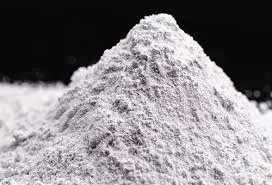
Aug . 13, 2024 14:36 Back to list
Exploring the Properties and Applications of Hydroxyethyl Cellulose in Various Industries
The Importance of Hydroxyethyl Cellulose (HEC) in Modern Applications
Hydroxyethyl cellulose (HEC) is a water-soluble polymer derived from cellulose, a natural polymer that forms the structural component of plant cell walls. HEC is widely used in various industries due to its unique properties, including thickening and stabilizing capabilities, making it an essential ingredient in many formulations. This article will explore the characteristics, applications, and benefits of HEC, highlighting its significance in modern technology and consumer products.
HEC is synthesized through the etherification of cellulose with ethylene oxide, resulting in a product that retains the fundamental structure of cellulose while gaining additional properties. One of the most notable features of HEC is its ability to dissolve in water, forming a highly viscous solution. This property makes HEC an efficient thickener, which is invaluable in industries such as pharmaceuticals, cosmetics, food, and construction.
The Importance of Hydroxyethyl Cellulose (HEC) in Modern Applications
In the cosmetics sector, HEC is commonly found in lotions, creams, shampoos, and various personal care products. It acts as a thickener and stabilizer, improving the texture and consistency of these formulations. Moreover, HEC contributes to the moisturizing properties of cosmetic products by forming a protective film on the skin, which helps retain hydration and improve overall skin health. Its gentle nature makes it suitable for sensitive skin formulations, further expanding its usability in the cosmetic market.
hydroxyethyl cellulose hec

The food industry also benefits from the unique characteristics of HEC. It serves as a thickening agent and stabilizer in sauces, dressings, and dairy products. Its ability to create stable emulsions is particularly valuable in salad dressings, which require a homogenous mixture that resists separation. Additionally, HEC can improve the mouthfeel of food products, enhancing consumer appeal and satisfaction.
In construction, HEC is utilized as a thickening and water-retention agent in cement and plaster formulations. Its inclusion in these materials helps to improve workability, allowing for easier application and reducing the risk of cracks and shrinkage. Furthermore, HEC can enhance the bonding strength of various materials, contributing to the overall durability of construction projects.
The sustainability aspect of HEC cannot be overlooked, as it is derived from renewable resources. As the world shifts toward more environmentally friendly practices, the use of HEC aligns well with this trend. Its biodegradable nature adds to its appeal as a sustainable alternative to synthetic polymers that may cause environmental harm.
In conclusion, hydroxyethyl cellulose (HEC) plays a vital role in various industries, offering unique properties that enhance product performance and user experience. From pharmaceuticals to cosmetics, food products, and construction materials, HEC's versatility and effectiveness make it an indispensable ingredient. As research continues to explore new applications and formulations, the importance of HEC is likely to grow, solidifying its position as a key player in modern technology and consumer goods. With its renewable origins and eco-friendly profile, HEC represents a sustainable option for industries committed to reducing their environmental impact while providing high-quality products to consumers.
-
Versatile Hpmc Uses in Different Industries
NewsJun.19,2025
-
Redispersible Powder's Role in Enhancing Durability of Construction Products
NewsJun.19,2025
-
Hydroxyethyl Cellulose Applications Driving Green Industrial Processes
NewsJun.19,2025
-
Exploring Different Redispersible Polymer Powder
NewsJun.19,2025
-
Choosing the Right Mortar Bonding Agent
NewsJun.19,2025
-
Applications and Significance of China Hpmc in Modern Industries
NewsJun.19,2025







